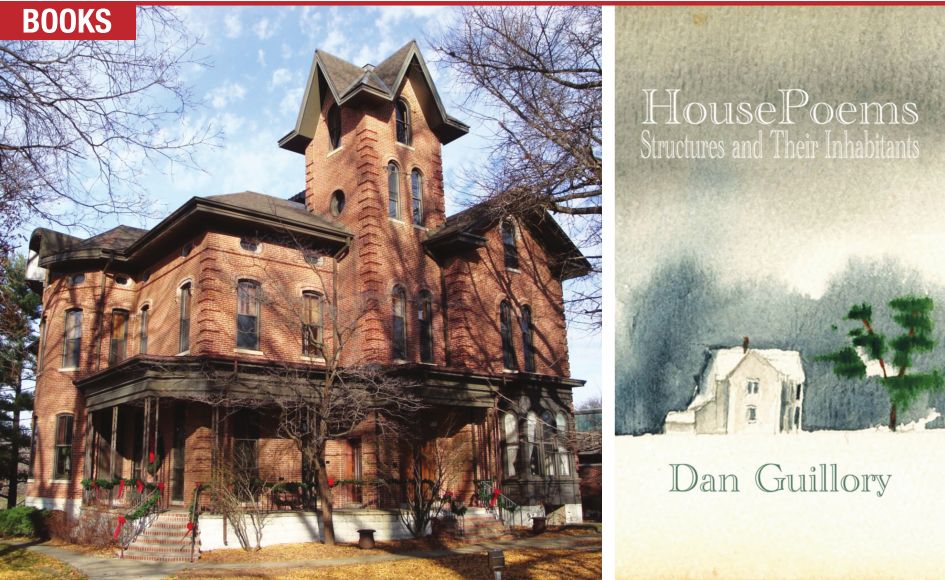
Home is where the heart is
Area structures featured in Dan Guillory’s latest book of poems with histories and photos
BOOKS | Peggy Sower Knoepfle
HousePoems by Dan Guillory Mayhaven Publishing, 2013 161 Pages, $19.95
HousePoems is the latest book by Dan Guillory, poet, essayist and historian of the central Illinois landscape and its people. He has presented his readers with a rich volume describing homesteads ranging from log cabins to central Illinois mansions to the White House itself – where he pays tribute to the gardens created by our presidents and our presidential wives. At the heart of this book are Guillory’s memories of houses and house building during his childhood in Louisiana, and stories about his own home, an 1895 farm house in Findlay, Ill. Its portrait, by Leslie Guillory, graces the cover of this book.
The book begins with a remarkable essay on houses and history. Much of it is based on Guillory’s own observations of his Uncle Ellis, a skilled craftsman who could, if necessary, build a house by himself.
He was a nimble little man, scurrying up his fourteen-foot ladder like a squirrel, hauling boxes of nails, yanking sheets of plywood with a rope, laying roofi ng felt, and nailing down slate shingles (he disliked asphalt, which he considered fl imsy and insubstantial). Except for the milled windows and doors, the sinks, bathtubs,
and water heaters, he built and painted the rest of the house by himself, including the kitchen cabinets. He was my fi rst model of self-suffi ciency and original design, because he devoted himself completely to the job at hand, making a perfect thing from scratch. I think of him every time I write a poem because he taught me invaluable truths about arrangement, positioning, and interdependence of parts. And I mourn his loss in a world where there is little time or space for such a craftsman.
Guillory details the building materials and architecture of the houses he has chosen and tells the stories of those who lived in them. Each account is followed by a poem as he considers the significance of the dwelling or expands on a story. There is an abundance of interesting photos.
The opening presentation features an account of the Elijah Iles home in Springfield, an early Greek Revival residence, with photographs of the structure before and after its restoration and relocation to Seventh and Cook streets. The reader learns that Abraham Lincoln played cards there with Elijah Iles, a prosperous Springfield merchant and banker. The house remains, . . . surviving more or less intact, still Beautiful in an unfamiliar world, A shingled passageway to the Past.
Guillory opens the doors to Victorian mansions in Springfield, Decatur, Bloomington and Clinton, and narrates the heartbreaks and triumphs of their inhabitants. Many of us have probably visited some of these houses as children or with our own children and grandchildren. HousePoems gives us a richer sense of these neighbors from the past and how they helped create the world we live in.
The most powerful poem in the book is not about the past or even about a house. Titled “Home Economics,” it is a tour of today’s Decatur, valiant but gravely wounded by 30 years of hard-edged globalization. In this poem, the man with the sign “Viet Nam Vet, Hungry & Homeless” is not the only one who has lost his bearings.
I stop my car, unsure of the protocol here, A fi ve, a ten, maybe a twenty—is it Charity, reparation, or simple frustration At trying to fi ll an emptiness without A name or even a country of its own.
Guillory is right. We need those “shingled passageway[s] to the Past.” We need to remember his Uncle Ellis.
Peggy Sower Knoepfl e has written articles for Illinois Times on globalization and was the editor of After Alinsky: Community Organizing in Illinois.